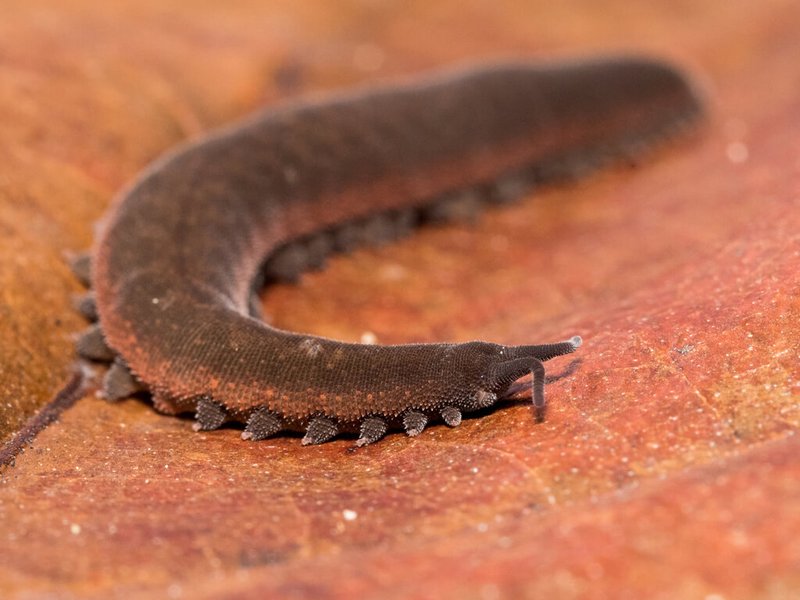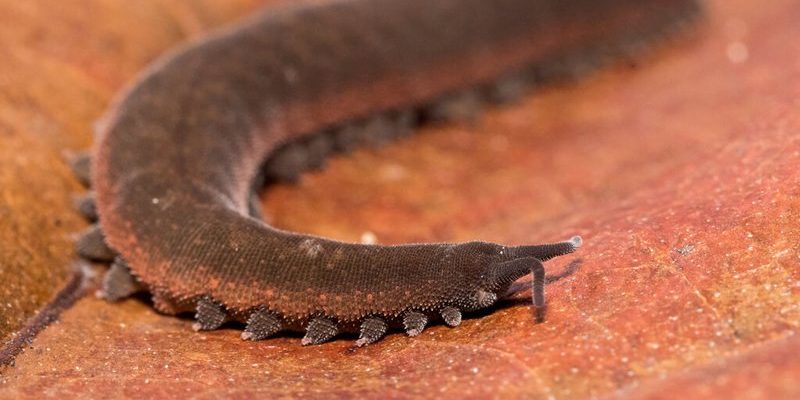
Velvet worms, part of the phylum Onychophora, are often described as a missing link in evolution. They resemble something between a worm and a caterpillar, with a body covered in a soft, velvety texture (hence the name). You might imagine them as miniature creatures from a fantasy world, with their squirming bodies and delicate legs—a sight that captivates anyone fortunate enough to spot them. But beyond their appearance, understanding how velvet worms move offers insight into the wonders of evolution and adaptation.
What Are Velvet Worms?
To appreciate how velvet worms move, let’s first dive into what they are. Velvet worms, or *Peripatus*, are soft-bodied invertebrates found mainly in tropical and subtropical regions. They thrive in moist environments, like leaf litter and under tree bark, where they hunt for prey such as insects or small arthropods.
These fascinating creatures possess a body that can stretch and contract. They generally measure around 1 to 10 centimeters in length and have around 14 to 43 pairs of legs. But it’s not just their structure that’s interesting—it’s how they use those legs to move.
The Unique Anatomy of Velvet Worms
Every velvet worm is equipped with a unique anatomical structure that aids in movement. Their legs are not just ordinary limbs; they are soft and tube-like, equipped with tiny claws that help them grip surfaces. Unlike many animals that rely solely on muscles to power their movement, velvet worms use a combination of muscle contractions and body wall movement.
The legs work in a sort of coordinated dance. When one leg extends, the opposite leg contracts. Picture a graceful ballet—each limb plays its part in creating a fluid motion. This coordination allows the worms to crawl efficiently over various terrains, whether they’re navigating uneven forest floors or climbing up tree trunks.
How Velvet Worms Move
So, how exactly do velvet worms pull off this remarkable movement? It’s all about coordination and rhythm. First, they contract their body muscles, which helps propel them forward. Then, their legs come into play. The soft legs extend and retract in a sequential pattern, almost like how a wave moves through a crowd.
You might be wondering why this matters. The way velvet worms move isn’t just fascinating—it’s a survival tactic. Their ability to crawl over surfaces and squeeze into tight nooks allows them to hunt efficiently and escape predators.
Leg Coordination and Movement Patterns
Leg coordination in velvet worms can be broken down into specific movement patterns. Generally, they adopt two main styles: crawling and hunting.
– **Crawling**: This is their primary movement. They flex and extend their legs in sync, which gives them a smooth, gliding motion.
– **Hunting**: When they’re after prey, their movements become more aggressive. They may move quicker, using a burst of speed for a sneak attack.
Their legs coordinate in a rhythm that’s both simple and complex. Imagine a delicate rhythm in a song—each note (or leg) plays a role in creating a beautiful melody of movement.
Why Velvet Worms Move This Way
Now, let’s get into the “why” of it all. Velvet worms have been around for millions of years, and their method of movement has evolved to suit their environment. Their soft bodies and coordinated leg movements help them navigate the moist ground and hunt for food, which is critical for survival. They primarily eat insects, and getting close enough to catch them requires a stealthy approach.
Their unique way of moving allows them to be both predator and prey. While they hunt insects, they also need to avoid larger predators in their environment—like birds or small mammals. A swift and coordinated escape can mean the difference between life and death.
Comparing Velvet Worms to Other Creatures
If we compare velvet worms to other invertebrates, you’ll notice some key differences. For instance:
– **Earthworms**: They move by contracting and relaxing their bodies using peristalsis. They don’t have legs like velvet worms, which makes their movement more uniform and less coordinated.
– **Caterpillars**: They crawl using a series of muscular contractions but have a different body structure, with more of a segmented appearance. Their movements can be a bit jerky compared to the smooth gliding of velvet worms.
This comparison highlights how different species adapt their movement to their environments and lifestyles. Each method works for its own set of challenges.
The Future of Velvet Worms: Research and Conservation
Recent studies on velvet worms focus not just on their unique movement but also on their conservation status. As they rely on moist environments, changes in climate and habitat loss can impact their populations. Scientists are investigating how these creatures adapt to environmental changes and what their future holds.
Understanding how velvet worms move gives researchers critical insight into their biology and how they interact with their ecosystems. Plus, every bit of research helps in the conservation efforts to protect these fascinating creatures.
Why You Should Care About Velvet Worms
You might be thinking, “Why should I care about velvet worms?” Well, here’s the thing: these creatures play a role in their ecosystems. They help control pest populations and are important for the food web. Learning about them contributes to our understanding of biodiversity and the health of our planet.
Protecting velvet worms means protecting their habitats, which benefits countless other species. By fostering awareness about these remarkable creatures, we can promote conservation and make informed decisions about our environment.
In summary, velvet worms move in a captivating way, using their coordinated legs and soft bodies to navigate their world. This unique method of movement isn’t just a quirky feature; it’s a beautifully evolved adaptation that has enabled them to survive for millions of years. Understanding how they move invites us to appreciate the intricacies of nature and the interconnectedness of species.
The next time you think about the wonders of the animal kingdom, remember the velvet worm and its elegant crawl. It might just inspire you to look a little closer at the world around you!

